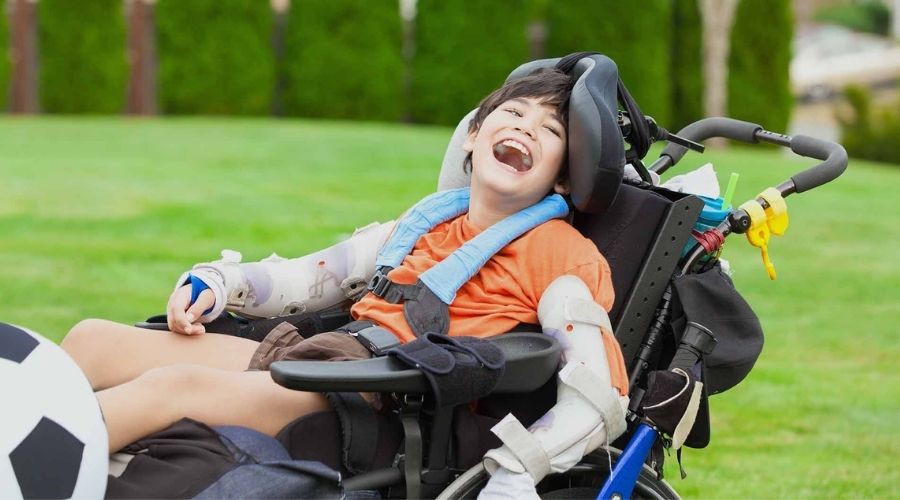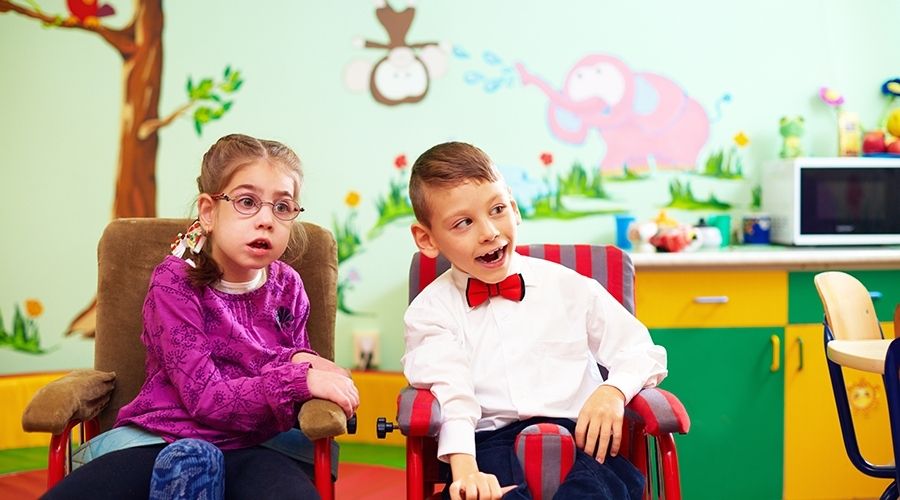People may get many types of health diseases. Some of them are congenital, while some may develop over time. One such disease is cerebral palsy (CP). Some people may get this problem from the time of birth and some get it due to accident in life. In this article, you will know the causes of cerebral palsy, its types, symptoms and possible treatments.
WHAT IS CEREBRAL PALSY:
Cerebral palsy is a group of disorders that can cause problems with balance, movement and posture. Here; cerebral relates to the brain and palsy means weakness or muscle problem. Cerebral palsy may also affect the cerebral motor cortex (a part of the brain). Cerebral is the part of the brain that directs the movement of muscles.
TYPES OF CEREBRAL PALSY:
There are different types of cerebral palsy; some of them are:
- Spastic Cerebral Palsy – This is the most common type of cerebral palsy. This causes muscle toned, stiff muscles and awkward movements. Sometimes it affects only one part of the body. But, in other cases, it can affect both the arms and legs, the torso, and the face.
- Dyskinetic Cerebral Palsy – This type of CP may cause problem in controlling the movement of arms, hands, legs and feet. This can make it difficult to sit and walk.
- Ataxic Cerebral Palsy – In this type, the patient may have problems in making balance and coordination.
- Mixed Cerebral Palsy – During this period, symptoms of more than one type of cerebral palsy may be seen in the affected person.
CAUSES OF CEREBRAL PALSY:

Often, cerebral palsy is caused by abnormal growth or damage to the developing brain. This can happen under the following circumstances:
- Brain injury before, during, or after birth
- Brain infection
- Lack of proper blood flow to the brain
- Abnormal development of the cerebral motor cortex during fetal development.
SYMPTOMS OF CEREBRAL PALSY:
Symptoms of cerebral palsy may include:
- Spasticity, stiff and tight muscles
- Weakness in arms or legs
- Developmental delay
- Delayed learning to roll, sit, crawl or walk
- Abnormal muscle tone, these may feel hard or very soft
- Bow down
- Walking on toes
- Ataxia (loss of coordination of muscles while walking)
- Drooling, drooling
- Tremors in the hands, feet, arms, or soles
- Trouble swallowing or speaking
- Suddenly become uncontrollable.
RISK FACTORS OF CEREBRAL PALSY:

It is important to know the causes and symptoms of cerebral palsy as well as its risk factors. This will help understand which people are more prone to it. Risk factors of cerebral palsy include:
- Newborn – The risk of getting this disease is more for the baby than in older children. This may be due to brain damage in children.
- Preterm and low birth weight – If a baby is born prematurely or is born with a low birth weight, then such babies are at a higher risk of having the symptoms of cerebral palsy.
- If the vaccination is not done – After the birth of the baby, if they get the necessary vaccine, brain infection can be prevented. If the vaccine is not given, it can lead to the problem of cerebral palsy. Also, even if the necessary vaccinations have not been done during pregnancy, the baby can still develop this problem in the mother’s womb.
- Injury – Injuries to children may also trigger the risk of cerebral palsy. They get injured when they are not given proper care and attention.
- Multiple birth – When twins and triplets are born together, then those babies are at the higher risk of getting this problem.
- Infertility Treatment – If someone undergoes treatment for infertility and after that gives birth to a child, then such child is at a high risk of developing cerebral palsy.
- Infection during pregnancy – Infection while pregnant can causes an increase in certain small proteins called cytokines, which circulate in the baby’s brain and blood. Cytokines cause inflammation, which can lead to brain damage in the baby. It also puts the baby at the risk of having cerebral palsy after delivery.
- Medical conditions of the mother – The risk of cerebral palsy for the baby is higher if mother has a thyroid problem, intellectual disability or seizures during pregnancy.
- Birth complications – If there are any complications at the time of birth, such as uterine rupture, placenta detachment or problems with the placenta, the oxygen supply to the baby may be reduced. It also may increase the risk of cerebral palsy.
DIAGNOSIS OF CEREBRAL PALSY:
- Developmental Monitoring – During this process, the growth and development of children is tracked. If the doctor or healthcare provider finds any deficiency or defect any problem in the development of the child, then he may recommend a developmental screening.
- Developmental Screening – During this test, child’s physical development and motor skills are checked. After doing this test, if the results are not normal, then your doctor can give some suggestions.
- Developmental and Medical Evaluation – Developmental and medical evaluation is done to diagnose which disorder the child has. During this time, your doctor may advise to make a number of diagnoses, including:
- Checking the child’s motor skills, muscle tone, reflexes and posture
- Understanding medical history
- Lab testing, genetic testing and imaging testing.
PREVENTION TIPS OF CEREBRAL PALSY:

The genetic problems that cause cerebral palsy are not possible to prevent. But, one can try to avoid cerebral palsy using these precautions:
- Make sure pregnant women are vaccinated on time to prevent infections that can cause cerebral palsy in the unborn babies.
- Protecting infants and children from head injuries.
- If you are having a baby after getting infertility treatment, avoid having more than one baby at a time.
- Get the embryo transferred to the womb.
- Getting health checkups done from time to time during pregnancy.
- Washing your hands from time to time so that the unborn baby does not get infected.
- Consult a doctor to avoid the risk of preterm or premature delivery.
- Protect the baby from being jaundiced, as it can damage the brain.
- Always make a child wear a helmet while driving.
- Always avoid excessive shaking, dropping and hitting the child.
- Do not leave the child alone in the bathtub or any part of the house. Always keep it under someone’s supervision.
TREATMENTS OF CEREBRAL PALSY:
Once cerebral palsy is confirmed, it should be treated immediately. Here’s how cerebral palsy is treated:
- Medicines
- Surgery
- Certain types of mechanical devices
- Physical, occupational, recreational and speech therapy.
However, many research suggests that there is no cure for cerebral palsy. But, with the help of some methods, people with cerebral palsy can improve their lives.
TAKE AWAY
You must have understood that what is cerebral palsy, what are the causes, symptoms and treatments of cerebral palsy. It can be caused due to genetic reasons as well as due to later carelessness. Hope, this article prove to be useful to you. If you liked this article, don’t forget to share it with others.
RELATED ARTICLES:
- How to Get Rid of Back Pain (Backache): Treatments and Effective Home Remedies
- Gout and Uric Acid: Do’s and Don’ts
- Sinusitis (Sinus) Infection: Causes, Symptoms, Yoga, Home Remedies and Treatments
- Alzheimer’s Disease: Causes, Symptoms, Prevention and Treatments
- Fragile X Syndrome: Causes, Symptoms and Treatments
REFERENCES:
- Cerebral Palsy; Medline Plus.
- Causes and Risk Factors of Cerebral Palsy; Centers for Disease Control and Prevention.
- Cerebral Plasy; Wikipedia.
- What are the symptoms of cerebral palsy?; National Institute of Health.
- What is Cerebral Palsy?; Centers for Disease Control and Prevention.
